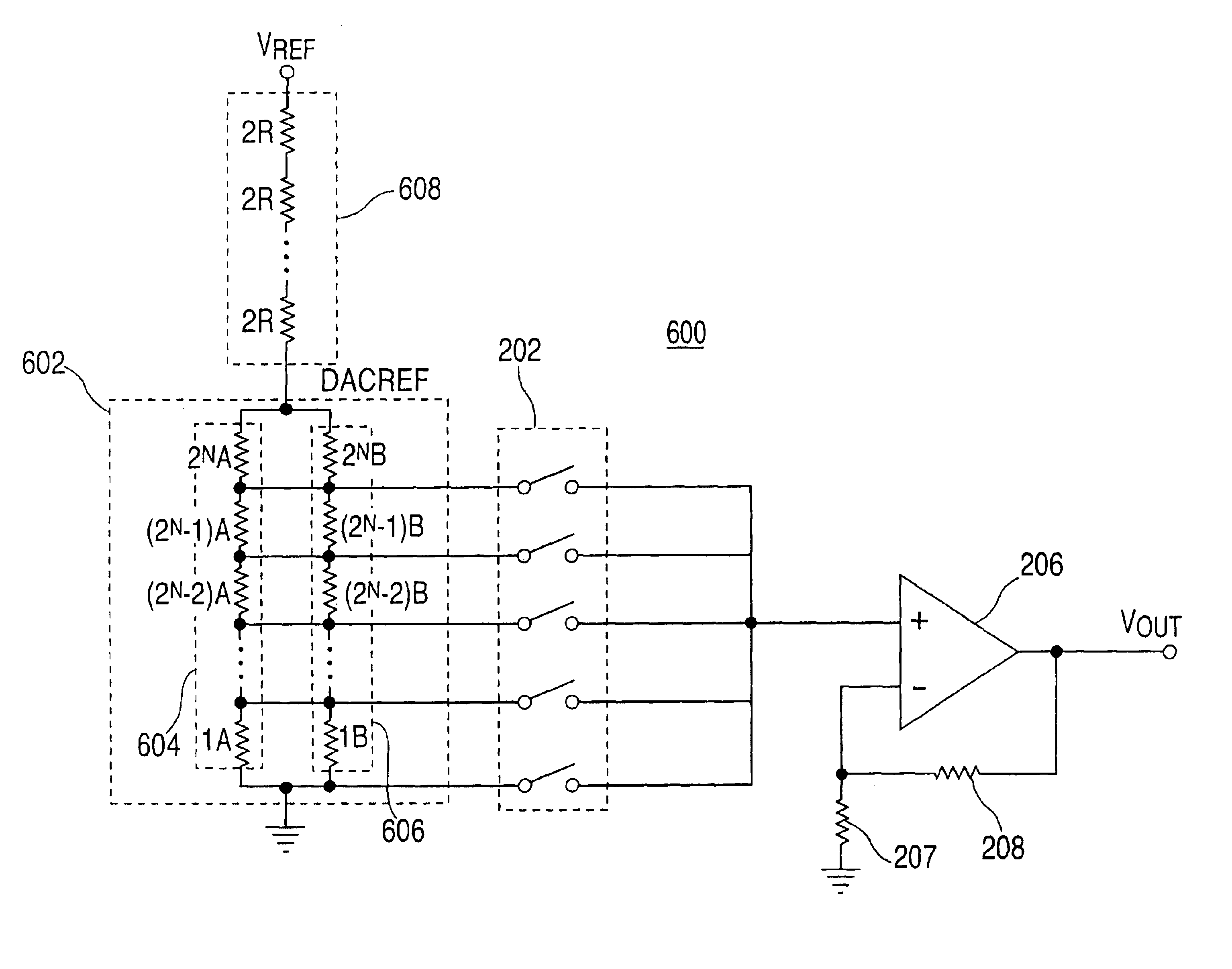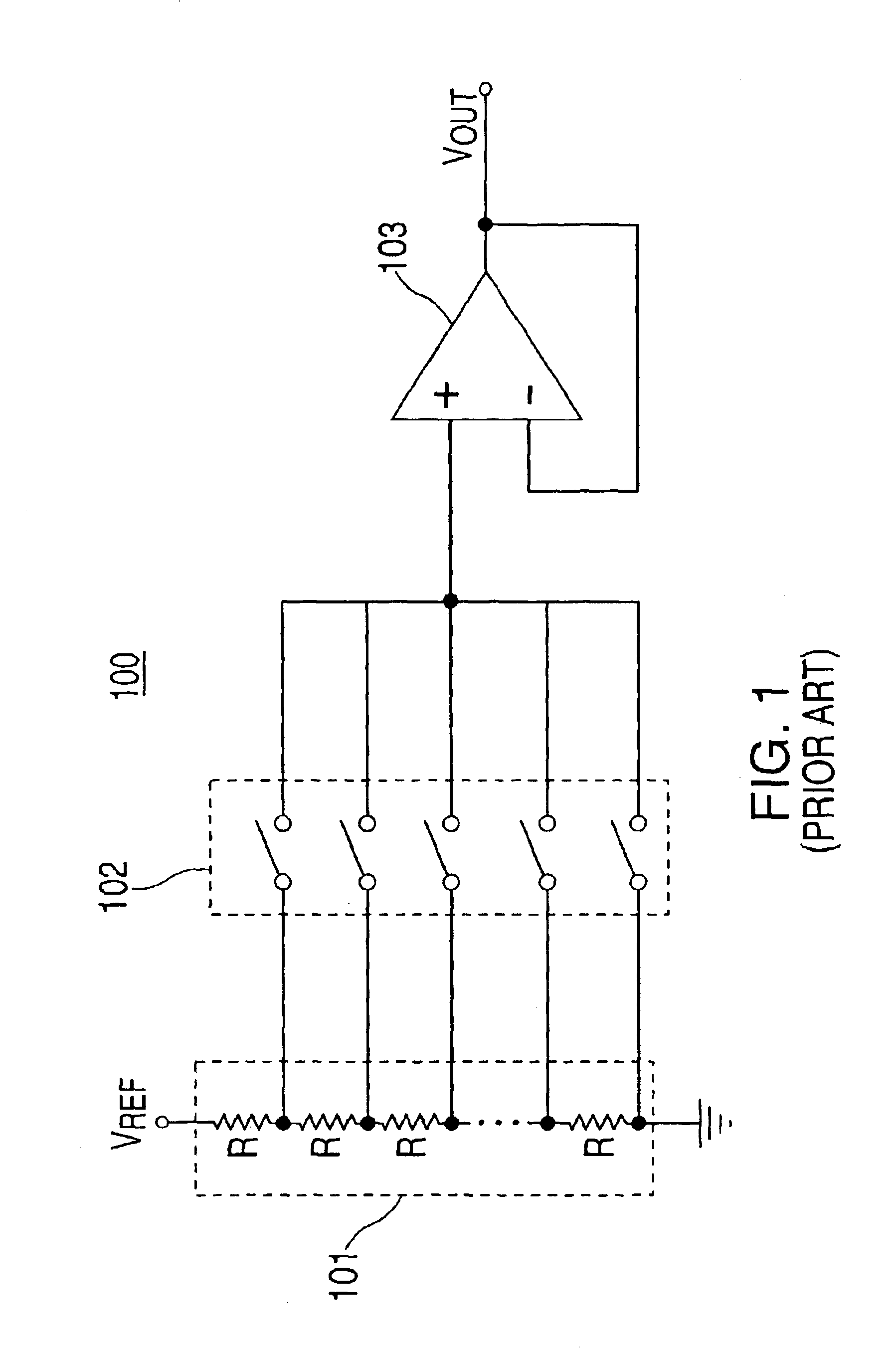Gradient insensitive split-core digital to analog converter
a digital to analog converter, gradient-sensitive technology, applied in the direction of digital-analog converters, physical parameters compensation/prevention, instruments, etc., can solve the problems of not being able to fabricate accurate resistors across the resistor value range, not being able to meet the requirements of a large range of resistor values, etc., to achieve a substantial insensitivity or reduce the sensitivity of gradient- gradient gradient gradient gradient gradient gradien
- Summary
- Abstract
- Description
- Claims
- Application Information
AI Technical Summary
Benefits of technology
Problems solved by technology
Method used
Image
Examples
Embodiment Construction
[0031]This invention relates to DACs that are substantially insensitive or have at least reduced sensitivity to the effects of error gradients. More particularly, various embodiments of resistor string DACs and interpolating amplifier DACs having at least partial insensitivity to error gradients are described below in accordance with the principles of the present invention.
[0032]To better understand the detrimental effects that error gradients have on the performance of a DAC, and how the present invention compensates for such effects, conventional resistor string and interpolating amplifier DACs will first be explained.
[0033]A conventional resistor string DAC 100 that may be subject to the effects of linear error gradients is shown in FIG. 1. DAC 100 includes resistor string 101, which includes 2N ideally identical resistors (e.g., each resistor of resistor string 101 has a resistance as close to R as possible). The nodes between successive series connected resistors are coupled, t...
PUM
 Login to View More
Login to View More Abstract
Description
Claims
Application Information
 Login to View More
Login to View More - R&D
- Intellectual Property
- Life Sciences
- Materials
- Tech Scout
- Unparalleled Data Quality
- Higher Quality Content
- 60% Fewer Hallucinations
Browse by: Latest US Patents, China's latest patents, Technical Efficacy Thesaurus, Application Domain, Technology Topic, Popular Technical Reports.
© 2025 PatSnap. All rights reserved.Legal|Privacy policy|Modern Slavery Act Transparency Statement|Sitemap|About US| Contact US: help@patsnap.com



